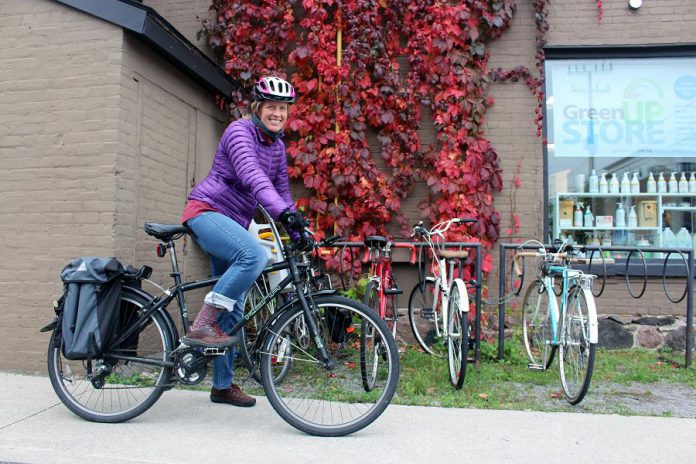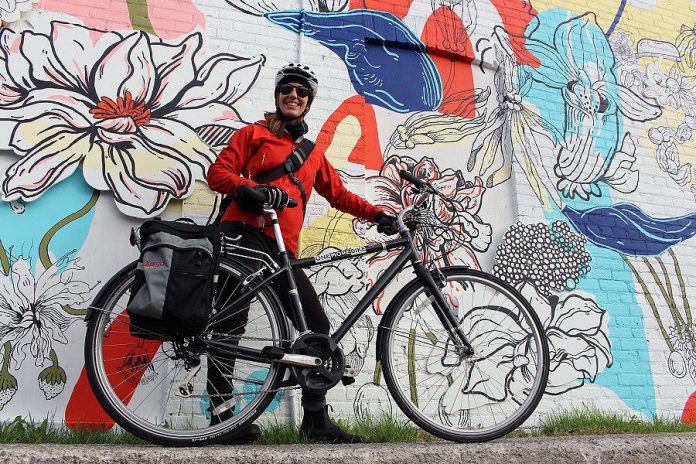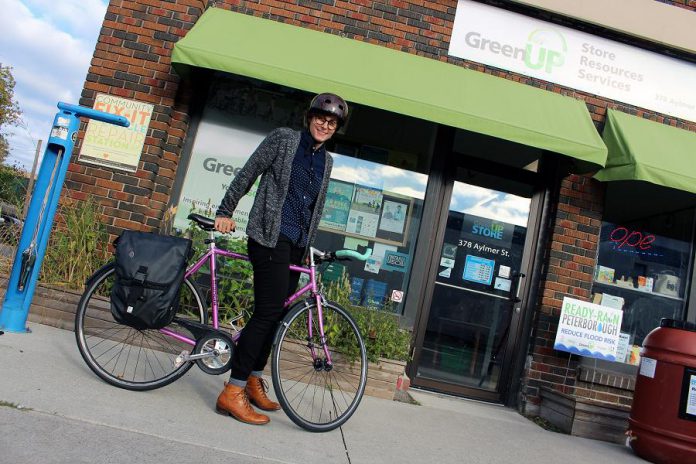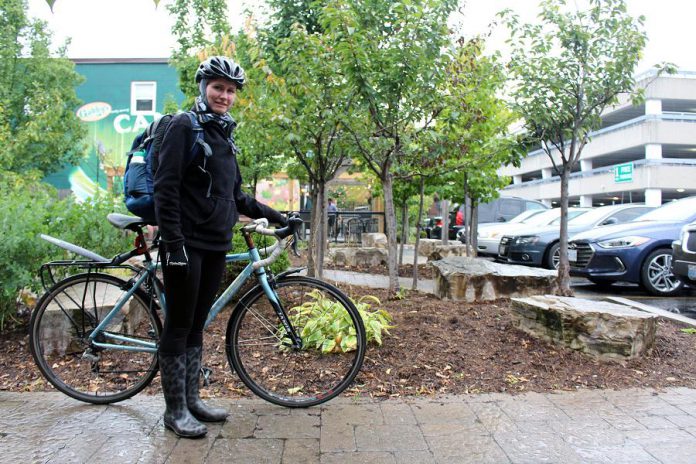
Those of us who enjoy adventures around town on two wheels have had the opportunity to ride our bikes in warmer and drier conditions this fall. Nice weather sure makes commuting, market trips, and recreational rides more convenient and enjoyable than in the typical cold, fall weather we usually experience.
Until recently, I have been a fair weather cyclist but this year I am extending my riding a bit later in the season, so that I can cut down on my driving and fit some more exercise into my day. Unfortunately, I get cold easily so usually my biggest barrier to fall riding is the weather and we are starting to get more typical conditions.
Fall is finally here so, thankfully, many of my colleagues at GreenUP are avid bike commuters and they have offered some insider tips about how to prepare for fall rides. As it turns out, I’m not the only one who feels the cold.
“My feet are my limiting factor for cycling,” explains GreenUP Coordinator of Transportation Programs Jaime Akiyama, “I love thick woolly socks that keep my toes warm when I’m not yet into winter boots. Tall socks are important too because I often have one pant leg rolled up. Merino wool socks are the best because they don’t make me cold if I get a bit sweaty.”

For GreenUP Store Coordinator Kristen LaRocque, it’s her hands that need protection:.
“I can’t ride without my insulated cycling gloves. Warm hands are essential for autumn riding. Any gloves will work but cycling-specific gloves are available and designed with grip and dexterity in mind.”
I have found that it is challenging to choose the right clothing for fall cycling. The variation in temperatures from my morning commute to my evening ride home can be tricky to navigate. My colleagues tell me that the answer is layering.
“It can be hard to dress for comfortable cycling in the fall because the temperature in the morning can be so dramatically different from the afternoon temperature,” explains GreenUP Executive Director Brianna Salmon. “I usually bundle up in the morning and then store all my layers in my panniers on the way home.”

Akiyama agrees.
“Autumn is all about layering. So often my ride in the morning is a wee-bit chilly but by midday I am stripping down to the bottom layer. You don’t need to have special gear — just lots of layers.”
It is also a challenge to avoid being cold before my body warms up, and then also be dressed in layers without getting too hot and sweaty along the way. I find that wearing a jacket with a full front closure helps. It can be easily unzipped once I have warmed up along my route.
“I love my Buff!” shares Akiyama about his thin tube-like scarf. “I can pull it up over my ears to block a chilly breeze, and once I warm up, or if the temperature warms up, I can pull it down and let it hang loose on my neck.”
At this time of year, the weather can be very unpredictable, so GreenUP Water Programs Coordinator Jenn McCallum suggests not forgetting your rain gear.
“It’s always a good idea to pack a rain coat in case of changes in the weather. Also, if I know the rain is coming, my rubber boots are key.”

I really admire my colleagues’ ability to tough-it through cold and wet conditions! I’m not one to ride in the rain so if I get caught without rain gear, I have a 10-ride transit pass tucked away in my wallet. That way, if the weather is miserable when I leave work, I can take the bus home in the evening.
Proper clothing is key to making your fall ride more comfortable, but adding a few options to your bicycle can help too.
Salmon recommends a chain guard and fenders.
“I have installed a chain guard and fenders on both of my commuter bikes, summer and winter, so that I don’t get sprayed by puddles or get greasy from the chain. I particularly like long fenders that protect my shoes and boots from getting wet.”
In fall, you’ll also want to keep an eye on the light. Fall light fades quickly and often your commute can be darker then expected. Have lights with you all the time, just i ncase. Lights should be on half an hour before dusk and dawn to make sure you are visible. Daytime running lights can also drastically improve safety, especially in foggy conditions.
With so much preparation required to cycle comfortably in fall, I wonder what keeps my colleagues motivated to hop on their bike when it seems like such an effort.
McCallum gives us her perspective:
“I love the scent of fallen leaves, to hear them crunch under my wheels, and to sense the changing weather. The leaves at this time of year are so beautiful and what better way to enjoy them than while riding a bicycle?”
I can agree with my office mate. While the ride usually starts out cold, I warm up quickly as the heat I generate from my effort balances out with the cool morning air. Each morning I enjoy my downhill glide to work and at the end of the day I look forward to a challenging climb back up to the north end.


























